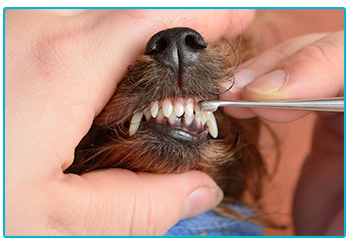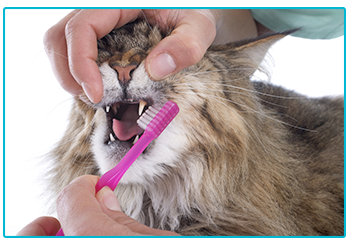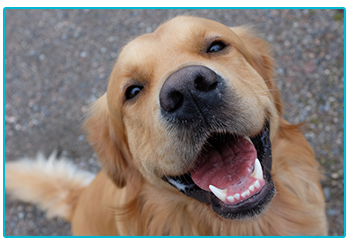We all know that brushing our teeth is essential to maintaining a healthy mouth! However, many of us seem to forget this when it comes to our pets! Dental disease, also known as periodontal disease, is the most common condition affecting dogs and cats in the UK. Here at The Insurance Emporium, we consulted our pet health expert to find out what we can do to protect our furry friends’ teeth. Read on to discover more about dental disease in pets!

The problem
As with humans, dental disease in pets is due to the build-up of plaque and tartar. This can lead to periodontal disease, which involves inflammation of the gums, fibres and ligaments surrounding tooth roots. If this progresses it can result in bacterial infection, and finally, loss of teeth. Cats can also develop painful erosions on their teeth, known as resorptive lesions, which can cause teeth to fracture.
The causes
There are several factors that can contribute to dental disease, including tooth alignment, diet, infectious disease, dental care routine and genetics. The easiest of these for owners to control is a dental care routine! You might want to make sure you get your pet’s teeth checked at least once a year by your vet, but there are some additional methods you could also be able to use…

Know the signs
Instead of relying upon the vet to pick up on potential problems, you can get to know the signs of dental disease yourself! Things to look out for could be bad breath, discomfort when eating, increased amounts of saliva, bleeding or receding gums, and discoloured or loose teeth.
Brush
Just as you clean your own teeth, vets recommend that you brush your dog or cat’s teeth daily. Make sure not to use human toothpaste though, as they often contain substances harmful to pets. You could instead get a pet-friendly toothpaste from your vet or local pet shop.
Specialist products
There are some products available to purchase from your vet that can help prevent the build-up of plaque. These can be applied directly to your four-legged friend’s teeth and gums. You could also use anti-plaque and breath-freshening products that can be added into their drinking water!

You are what you eat
There are many dental diets (which use a larger kibble) and treats available in shops that can help to reduce plaque on your pet’s teeth. If feeding dental treats to a dog, they should chew on them for several minutes to be completely effective.
Accident prevention
Pets can suffer damage to their teeth by chewing or biting on inappropriate hard toys, sticks, stone or bones. Long-term abrasion can also contribute to dental problems, if teeth are gradually worn down by repeated exposure to toys such as tennis balls. This can happen especially if balls are covered in grit or sand. Throwing your pooch a smooth rubber ball can actually be safer for their teeth!
Making sure your dog or cat has a mouth full of healthy teeth can make a great deal of difference to their overall wellbeing! If you want to know more about this issue, the best thing could be to get some advice from your local vet. With just a little effort, you might be able to ensure your pet has a radiant smile and fresh breath for a long time to come!
All content provided on this blog is for informational purposes only. We make no representations as to the accuracy or completeness of any information on this site or found by following any link on this site. We will not be liable for any errors or omissions in this information nor for the availability of this information. We will not be liable for any loss, injury or damage arising from the display or use of this information. This policy is subject to change at any time.


